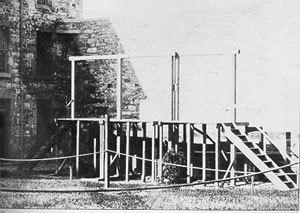17th century - 1820
1820 - 1845
1845 - 1854

1860 - 1865

1877
In June of 1877, a group of labor rights protestors associated with the Molly Maguires were hanged in Carbon and Schuylkill county. While the Molly Maguires engaged in brawling and sabotage, their murder charge is considered unjust, as the judge was influenced by the mining companies they were protesting the work conditions of. The king of the Molly Maguires, John Kehoe, was only given a full state pardon in 1979, 102 years after his execution.

1892 - 1900
Ellis Island opens to process new immigrants from all nationalities. Many Irish immigrants still live in poverty, but there are many who have climbed the social ladder and have gained respect in American society. In places such as Boston, Chicago, and New York many Irish Americans were elected to political office.
1928 - 1960
2nd generation Irish & Italian American Al Smith loses the presidential election. The Ku Klux Klan played a major role in bringing him down. Despite this, many Irish Americans rose to fame in places like Hollywood, politics, and radio. As a result, they changed the way America viewed the Irish.
1960
John F. Kennedy is elected to presidential office. He is the youngest president to ever be elected, and he is of Irish descent. While Catholicism is still viewed with heavy stigma by American culture, Irish hatred has diminished heavily in comparison to what it was a century ago.
St. Patrick's Day 1737
St. Patrick's Day 1762

Postcard from St. Patrick's Day 1850
St. Patrick's Day 1862
https://www.nytimes.com/2015/09/08/insider/1854-no-irish-need-apply.html
https://www.irish-genealogy-toolkit.com/Irish-immigration-to-America.html
https://www.irishamerica.com/2007/06/the-1930s-when-irish-catholics-changed-america/
https://www.whitehouse.gov/about-the-white-house/presidents/john-f-kennedy/